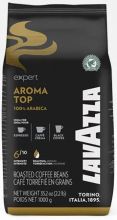Coffee beans
Coffee beans for Espresso & Coffee
A coffee bean is a seed of the coffee plant, and is the source for coffee. It is the pit inside the red or purple fruit often referred to as a cherry. Even though they are seeds, they are referred to as 'beans' because of their resemblance to true beans. The fruits - coffee cherries or coffee berries - most commonly contain two stones with their flat sides together.The two most economically important varieties of coffee plant are the Arabica and the Robusta; 75-80% of the coffee produced worldwide is Arabica and 20% is Robusta. Arabica beans consist of 0.8-1.4% caffeine and Robusta beans consist of 1.7-4% caffeine.
The two varieties differ in taste, growing conditions, price. Arabica beans tend to have a sweeter, softer taste, with tones of sugar, fruit, and berries. Their acidity is higher, with that winey taste that characterizes coffee with excellent acidity. Robusta, however, has a stronger, harsher taste, with a grain-like overtone and peanutty aftertaste. They contain twice as much caffeine as Arabica beans, and they are generally considered to be of inferior quality compared to Arabica. Some robustas, however, are of high quality and valued especially in espressos for their deep flavor and good crema.
Robusta is grown exclusively in the Eastern Hemisphere, primarily in Africa and Indonesia. Arabica is also grown in Africa and Papua New Guinea, but it's grown dominantly in Latin America. Colombia only produces Arabica beans. Some countries, like Brazil and India, produce both.
Buying your fresh coffee beans now:










